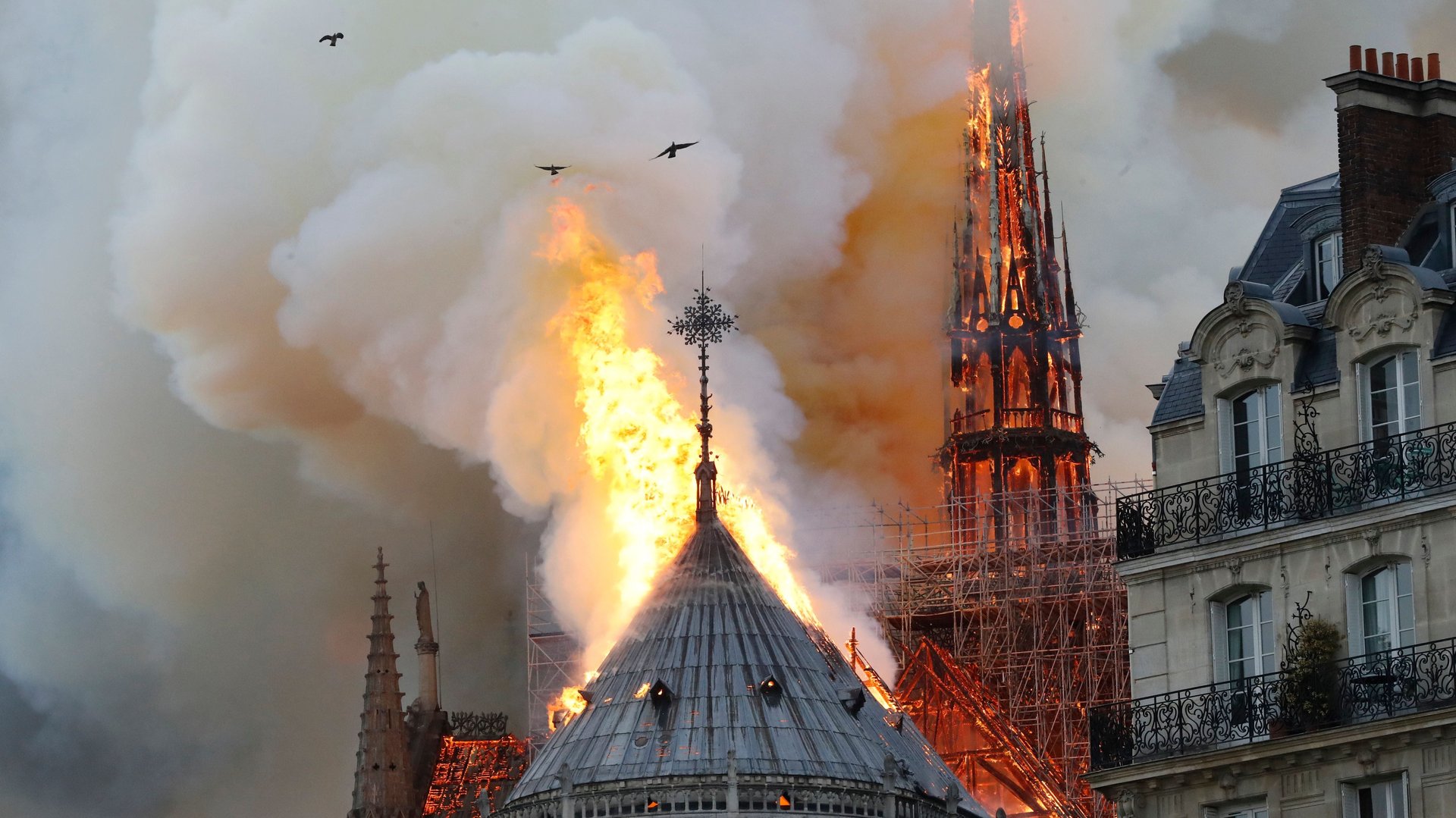Why does it look like birds were circling the flames of Notre Dame?
Ravens are beguiling birds, as striking in appearance as they are sharp and tricky. In the psyche, they retain “an aura of the uncanny,” says Taschen’s encyclopedia of archetypal images, The Book of Symbols (2010).


Ravens are beguiling birds, as striking in appearance as they are sharp and tricky. In the psyche, they retain “an aura of the uncanny,” says Taschen’s encyclopedia of archetypal images, The Book of Symbols (2010).
Not surprisingly, then, they were summoned in the public imagination earlier this week, as unsettling images of the fire at Notre Dame Cathedral, in Paris, circulated on social media.
Curious about the unforgettable collision of birds, flames, and smoke, and the suggestion that ravens had been drawn to the fire, we contacted the Cornell Lab of Ornithology, at Cornell University, to ask its experts for some insights. Their responses tell us a little bit about birds and fires generally, and much about the stories we attach to events and images without much grounding in facts.
One major takeaway, for instance: “There are no ravens in Paris. Rooks and Carrion Crows, but no ravens,” the ornithologists write.
Here’s what else we learned.
On why they might be close to the flames:
In Florida, where wildfires and prescribed burns are routine occurrences, and we often get to observe its dynamics up close, we very often see birds coming in—even from miles away—to forage on two classes of prey: (1) stray organisms that are escaping the blazes (I once watched an Eastern Screech Owl doing this very close to active flames), and (2) insects that are attracted to the smoke because of their life history dependency on dying or recently dead wood (e.g. Buprestid beetles, which are often called “smoke beetles”). These insects are often quite large and conspicuous, and are snatched in the air by predators ranging from kites and crows to flycatchers, swifts, and swallows.
I know of some species attracted to smoke from large fires (Cattle Egrets are for sure). But, they’re looking for small animal prey to be exposed. I can’t imagine that would apply here.
On nests, there’s no agreement:
I think it unlikely that there are any, or at least many, birds nesting in the church structure, because every visible, horizontal surface that I remember was covered with a combination of spikes and netting to keep pigeons from perching on much of the surface. It’s standard operating practice on large, old stone buildings in Europe to keep the acidic droppings of pigeons from destroying things like carvings.
I can’t say whether there are [any] nests from the footage I have seen. I only found one image with birds in it, and they seemed to be flying away. It’s possible that there were nests in and among the crannies, but I can’t tell from the one picture I saw. It’s hypothetically possible that they may have stayed longer than normal in the burning structure because they were attending nests, before finally being forced to flee. But I have heard of at least one instance in which a wildfire broke out on a nest box trail and the birds fled during the fire, and then came back afterwards to attend the nests that were still viable.
There are no ravens in Paris. Rooks and Carrion Crows, but no ravens. None in the whole region according to eBird and my European field guide. Certainly pigeons would be nesting on the structure, I would think.
The image is poetic, but not informative
Take these answers with a grain of salt. As a spokesperson for the lab emphasized: “The bottom line is that it’s all speculation because, to our knowledge, there’s no scientific work that has been done and published on the subject of birds and fire, except for the example noted [above].” What’s more, these ornithologists were not in Paris the day the photos were taken.